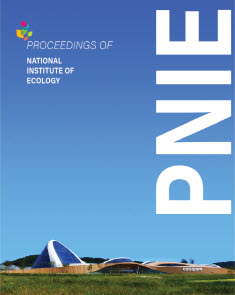Identifying Potential Food Source through DNA Barcoding Analysis of Feces from Invasive Slug, Limax maximus (Linnaeus 1758) (Gastropoda: Pulmonata), in Republic of Korea
Identifying Potential Food Source through DNA Barcoding Analysis of Feces from Invasive Slug, Limax maximus (Linnaeus 1758) (Gastropoda: Pulmonata), in Republic of Korea
ParkKibeom(Kibeom Park) (Invirustech)
ParkYoungjun(Youngjun Park) (National Institute of Ecology)

ChoYoungho(Youngho Cho) (National Institute of Ecology)

초록
Unintentional dispersal of organisms has explosively increased due to expansion of human activities. Among introduced organisms, some organisms are categorized as invasive species because of their effects on environmental risk, economic loss, and human health. In 2023, a leopard slug (Limax maximus) was reported in Suwon, Republic of Korea. This slug was designated as a potential invasive species because a wide range of plant species were identified as food sources for this slug in its original habitats. However, it is difficult to investigate the ecological risk of this newly introduced slug in Republic of Korea. Therefore, the potential ecological risk from this newly introduced slug was estimated by meta-genome analyses of its feces. Through meta-genome analyses, 22 Families, 28 Genera, and 26 Species of land plants were identified. Among these 26 identified plant species, six economically important crops – squash (Cucurbita maxima), tomato (Solanum lycopersicum), potato (Solanum tuberosum), cowpea (Vigna unguiculata), rice (Oryza sativa), and oriental melon (Cucumis melo) – were identified. Therefore, leopard slugs potentially could cause economic losses in Republic of Korea. Further study is required to build a control strategy against leopard slugs.
- keywords
- Leopard slug, Invasive species, Meta-genome, Food source, Feces, Limax maximus
Abstract
Unintentional dispersal of organisms has explosively increased due to expansion of human activities. Among introduced organisms, some organisms are categorized as invasive species because of their effects on environmental risk, economic loss, and human health. In 2023, a leopard slug (Limax maximus) was reported in Suwon, Republic of Korea. This slug was designated as a potential invasive species because a wide range of plant species were identified as food sources for this slug in its original habitats. However, it is difficult to investigate the ecological risk of this newly introduced slug in Republic of Korea. Therefore, the potential ecological risk from this newly introduced slug was estimated by meta-genome analyses of its feces. Through meta-genome analyses, 22 Families, 28 Genera, and 26 Species of land plants were identified. Among these 26 identified plant species, six economically important crops – squash (Cucurbita maxima), tomato (Solanum lycopersicum), potato (Solanum tuberosum), cowpea (Vigna unguiculata), rice (Oryza sativa), and oriental melon (Cucumis melo) – were identified. Therefore, leopard slugs potentially could cause economic losses in Republic of Korea. Further study is required to build a control strategy against leopard slugs.
- keywords
- Leopard slug, Invasive species, Meta-genome, Food source, Feces, Limax maximus
- 투고일Submission Date
- 2024-07-05
- 수정일Revised Date
- 2024-07-24
- 게재확정일Accepted Date
- 2024-07-25
- 다운로드 수
- 조회수
- 0KCI 피인용수
- 0WOS 피인용수
_학술지_디자인_시안_koar_top_300x55.png)

